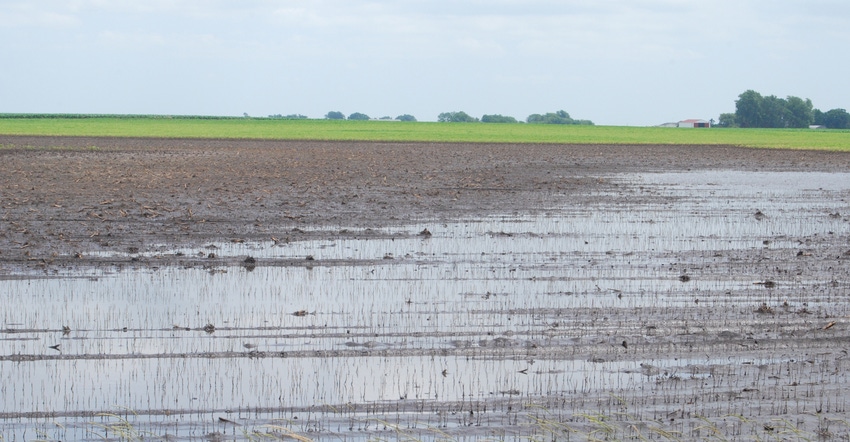April 23, 2019

According to recent statistics, farmers spend roughly $3.5 billion to $4 billion in crop insurance premiums to insure themselves against a major loss. Recent weather in western Iowa and Nebraska remind us that we’re not immune from the impact of Mother Nature and the effect she can have on our major crops.
Typically, farmers spend a lot of time reviewing the type of policy they are entering and the premium associated with that policy, but they may not review the policy’s reporting requirements well enough.
During the last few years, politicians have proposed lowering subsidies for crop insurance premiums and trimming USDA’s budget. In light of that discussion, USDA says it wants to do more to combat insurance fraud and abuses in the system.
Purpose of new regulations
The 2018 Farm Bill retained most of the major components of the federally subsidized crop insurance program administered by USDA’s Risk Management Agency. However, in recent years, focus has increased on preventing fraud with respect to crop insurance claims. The Federal Crop Insurance Corp. recently issued new regulations to implement those goals. The purpose of the regulations is to combat intentionally fraudulent claims of producers.
Of course, we all know we need to read and familiarize ourselves with the policies we enter into, and crop insurance is no different. The crop insurance industry, with its government and private insurance company interplay makes it more difficult for producers to keep up with an ever-changing industry.
However, keeping up with new developments and consulting with your agent are both critical. You can attend Iowa State University Extension presentations or inform yourself through the Ag Decision Maker website.
Provide accurate information
One of the areas that can impact the “bottom line” in an already tough farm economy is jeopardizing a claim by making a reporting mistake or not understanding the type of policy you are entering into.
Here are some tips to put yourself in a better position to successfully submit a crop insurance claim and manage the risk on your farm operation. As always, consult your agent and make note of the following:
Make sure your agent has a good understanding of your farming operation. Do you farm jointly with others, creating a partnership? What is the ownership arrangement? Is your farmland owned by an entity, such as an limited liability company or a corporation? What farms do you rent from a landlord? If you own land in different counties or different states, does your agent know that, and is it being properly reported?
Use technology for better reporting. Use yield monitors, mapping data and other technologies to increase the efficiency and consistency of reporting. Remember that federal agencies (such as the Farm Service Agency and RMA) can share information with each other. Make sure your reporting is consistent across agencies.
Review your “plan of insurance.” Do this yearly with your agent to ensure the type of policy is still relevant to your operation.
Explore your coverage options. Also, learn about new legal developments and educate yourself.
Claim denied. Now what?
What happens if I file a claim and it is denied by the insurance company? If a crop insurance participant receives an adverse decision from the company, the farmer may appeal that decision and submit the case to a trained arbitrator.
If you review your policy closely, you will see the arbitration provisions. There is also a separate process involving the National Appeals Division, which lets an insured person appeal from a final agency determination that is adverse to him or her.
Legislature winding down
In last month’s column, we focused on several areas the Iowa Legislature is looking to address with respect to agriculture.
To keep on pace to finish the session in 100 days, the Iowa Legislature sets two self-imposed “funnel” deadlines. The second “funnel” was April 5, when Senate bills must have been reported out of House committees and House bills must have been reported out of Senate committees.
Among those bills that were “killed” by the funnel was a bill prohibiting the knowing employment of unauthorized workers and mandating the use of the E-verify system.
At the time this issue went to print, an additional bill was signed into law by Gov. Kim Reynolds: a bill relating to axle loads on “implements of husbandry.”
A few bills still “alive” and in process were appropriations bills being discussed, as well as other tax and oversight bills.
In next month’s column, we’ll wrap up the legislative session with a look at bills enacted and their impact on farmers. This column is current as of April 22.
Herbold-Swalwell is an attorney with Brick-Gentry in Des Moines. Email [email protected].
Programs aid farmers hit by flooding
USDA recently announced program changes to aid farmers in western Iowa and other areas hit by flooding. Farm Service Agency offices in six counties in Iowa are accepting applications from farmers for the Emergency Conservation Program to address damage due to flooding. Sign-up for ECP began April 15.
The counties are Fremont, Harrison, Mills, Monona, Pottawattamie and Woodbury — all along Iowa’s western edge where flooding of the Missouri River this spring caused widespread destruction.
ECP enrollment deadlines vary by county, and producers need to contact their local FSA office. Approved ECP practices may include debris removal; fencing replacement and repair; grading, shaping and leveling of impacted fields; and conservation structure rehabilitation. FSA has information on eligible practices.
ECP assists producers with the recovery cost to restore the agricultural land to pre-disaster conditions, says Amanda DeJong, state executive director for FSA. Applicants may receive up to 75% of the cost of the approved restoration activity. ECP funds are limited to activities that return the land to relative pre-disaster condition. Conservation concerns that were present on the land before flooding are not eligible for ECP. Visit farmers.gov/recover to learn more.
“Dealing with natural disasters is never easy, and the extreme weather we’ve had this spring is going to require we all work together to get farmland back in use,” DeJong says. “ECP is one more tool producers can use on their road to recovery. It’s important they contact their local FSA office to discuss their options, before taking action to permanently repair damages. Producers with damage must apply for assistance prior to beginning reconstructive work to qualify for cost-share assistance.”
Source: USDA, which is responsible for information provided and is wholly owned by the source. Informa Business Media and its subsidiaries aren’t responsible for any content contained in this information asset.
About the Author(s)
You May Also Like






